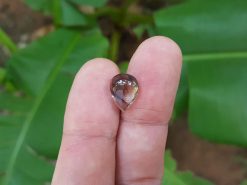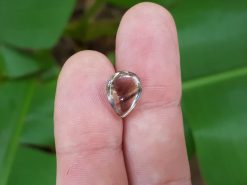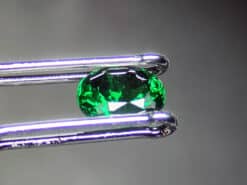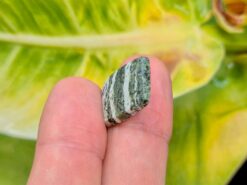Nephrite jade, from New Zealand

Buy natural gemstones in our shop
Nephrite jade
Nephrite is a rock composed essentially of a variety of amphibole, actinote, of chemical formula Ca2 (Mg, Fe) 5Si8O22 (OH) 21. It is one of the two rocks called jade, the other being jadeitite, composed essentially of jadeite, a variety of pyroxene. Nephrite is an ornamental stone, used in a wide variety of jewelry or decorative objects.
The name nephrite is derived from the Latin lapis nephriticus, translation of the Spanish piedra de ijada.
Nephritis can be translucent, white or very slightly yellow (called variety in China fat jade sheep), or opaque, white or very slightly brown or gray (variety called jade bone chicken) up to green, or present any nuances Of the green.
Canada is the main producer. Nephrite jade was mostly used in China before the nineteenth century, in New Zealand, on the coasts of North America, in Neolithic Europe and in Southeast Asia.
Prehistoric and ancient China
The main sources of nephrite jade in Neolithic China were the now depleted deposits in the Ningshao area in the Yangtze Kiang Delta (Liangzhu culture, 3400-2250 BCE), as well as in an area of Liaoning Province And in Inner Mongolia (Hongshan culture, 4700-2200 BCE).
Jade was used to create many utilitarian and ceremonial objects, from interior decorations to the funeral costumes of the Han dynasty. It was considered the “Imperial Stone”.
From the earliest Chinese dynasty to the present day, the most exploited jades were those of the Khotan region of Xinjiang (other areas such as Lantian in Shaanxi were also in high demand). The white and green nephrites are small veins or are carried by the rivers running down the Kunlun Mountains to the Taklamakan Desert.
The harvest of the jade was concentrated on the Yarkand, the Yurungkash (or “White Jade River”) and the Karakash (“Black Jade River”).
The Kingdom of Khotan, south of the Silk Road, paid China an annual tribute of white jades, considered to be more valuable than gold and silver, and were transformed into “objets d’art” by Craftsmen attached to the imperial court.
New Zealand
Nephrite is known in the Maori language as pounamu; It plays a very important role in the Maori culture. Considered as a taonga or treasure, it is protected by the Treaty of Waitangi: its exploitation is restricted and strictly framed (most of the jade sold on site today comes from British Columbia).
The Maori name of the South Island is Te Wai Pounamu, “The Land of Water of Green Stones” – that is to say the place where they were discovered.
The Maori made weapons and ornaments in nephrite, especially the mother (short masses) and the Hei-tiki (ornaments of necklaces). They considered that they had their own mana and transmitted them as heritage properties, or offered them to seal important agreements. In the absence of iron tools, they also used nephrite to make objects such as adzes.
Natural Nephrite Jade
















